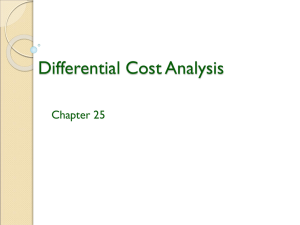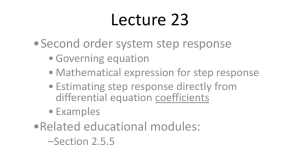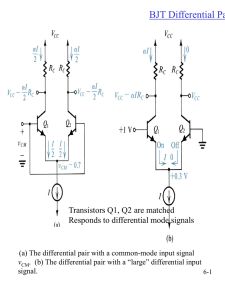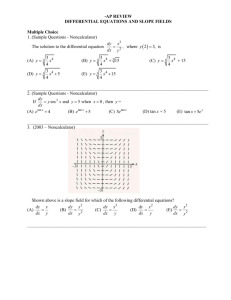Creating a Cost Control Culture Using Long
advertisement
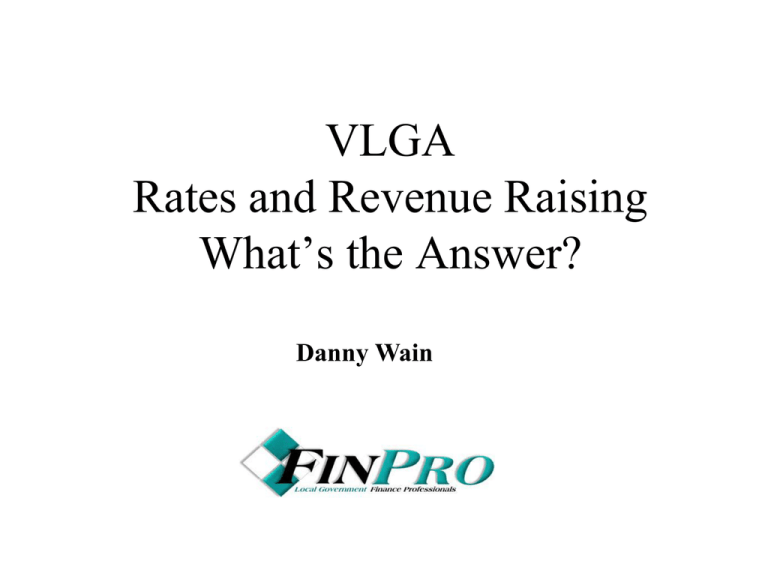
VLGA Rates and Revenue Raising What’s the Answer? Danny Wain Hefty rates Shock “They told me if I cannot pay the hefty rate increase they will take me to court and throw me out of my home” •Changes to the Local Government Act •Local Government Legislation Amendment (Miscellaneous) Bill 2012 •To improve local governance outcomes •Change the rules applying to Penalty Interest Rates •Include greater controls over council use of differential rates; •Ministerial Guidelines •Order in Council to disallow the use of a classification of land where the use is inconsistent with the guidelines •Changes to the Local Government Act •VCAT for a review of the way a Council has classified a person’s land for differential •An opportunity to provide equity to farmers, •The largest beneficiary of differential rates. The Age Aug 28 2012 Rating Equity Rating Equity There is a direct relationship between property holdings and disadvantage; less wealthy people tend to own lower valued housing stock Property owners with higher valued assets generally have a greater capacity to pay Property taxes do not take into account individual debt levels or income received by owners PRINCIPLE: There is no connection between the amount of rates paid and the level of council services received by individuals. Differential Rates Different rates in the dollar for different categories For farm land, residential property or commercial/industrial properties, Each paying a higher or lower rate in the dollar. To achieve greater equity or efficiency. No limit on the number or type of differential rates highest differential rate can be no more than four times the lowest differential rate. Differential Rates Council needs to consider three equity principles. the benefit or user pays principle the capacity to pay principle the incentive or encouragement principle Another consideration is: delivering a simple and transparent system of rates and charges. A simple rating system is more transparent EGM Differential S.161 of the Act, Council must specify: •Objectives of the differential rate, •Consistent with the equitable and efficient carrying out of Council’s functions, •Detailed information (specified in the Act) with respect to the basis on which the differential rate is imposed •Reasons for imposing the differential rate; and •Characteristics of the land which are the criteria for declaring the differential rate. EGM Differential •Objectives based on use of additional funds •Use the money to fund research on problem gambling •Imposition of the higher differential rate on premises operating EGMs can then be justified on the basis of the connection between problem gambling and EGMs. Local Government Maintains $55 billion assets Rates comprise 58 % of total funding Rates contribute only 2.9 % of every dollar raised in taxes nationally. Council Revenue 2010/11 7% 9% Rates Fees & Charges & Other Specific Purpose Grants 57% 27% Gen.Purpose grants Council Revenue 2004/5 v 2010/11 60 50 40 30 2004/5 % 2010/11 % 20 10 Rates Fees & Charges & Other Specific Purpose Grants Gen.Purpose grants More Pressure on Local Government Revenue VGC Grants Cut $13.6M DB Payout $453M Fire Services Levy 10-11% EPA & Carbon Tax 3.7% HACC Grant cuts 2% More Pressure on Local Government Revenue Estimated Estimated Cost Percentage Percentage Cost State & State & Increase from of Rate Federal Federal Taxes/ 2011/12 Revenue Taxes/ Levies Levies EPA Landfill Levy (State) Carbon Tax Impact (Federal) Metropolitan Fire Brigade Levy (State) Total of (Major) levies 2011/12 $m $1.8 $0.0 $2.4 $4.2 2012/13 $M $2.0 $1.3 $2.5 $5.8 11.1% 4.3% 15.44% 2012/13 % 2.3% 1.4% 2.9% 6.6% Other Rating Options Municipal Charges •The use of a municipal charge reduces the amount that needs to be collected in the form of rates attached to the value of a property. Service Charge S162 • Collecting and disposing of refuse recycling and disposal. Cultural Recreation Lands Special Rates & Charges S163 Model Budgets – Rating Strategy 9. Rating Strategy •Strategy development •Current year rate increase •Rating structure •Rating Basis •Level •General revaluation of properties Financial Reporting to Council Sec 136 LGA- implement sound and prudent financial management : regard to economic circumstances (b) pursue spending and rating policies that are consistent with a reasonable degree of stability in the level of the rates burden; decisions and actions consider financial effects on future generations ensuring full, accurate and timely disclosure of financial information Quarterly the CEO must present to the Council a report on Budget V Actual Where does rates reporting fit in ? Rates per Capita 2011/12 Based on Average Rates per Capita for 2011/12 - Source MAV $900 $800 $762 $737 $700 $663 $600 $611 $618 Manningham Greater Dandenong $676 $686 Bayside State Average $573 $539 $515 $500 $453 $400 $300 $200 $100 $Monash Whitehorse Knox Glen Eira Kingston Boroondara Stonnington Rates Per Assessment 2012-2013 Based on Average Rates per Assessment for 2012/13 - Source MAV $2,000 $1,873 $1,800 $1,702 $1,600 $1,548 $1,383 $1,400 $1,424 $1,574 $1,578 State average Greater Dandenong $1,738 $1,453 $1,268 $1,200 $1,190 $1,000 $800 $600 $400 $200 $Monash Whitehorse Glen Eira Knox Stonnington Kingston Bayside Manningham Boroondara






